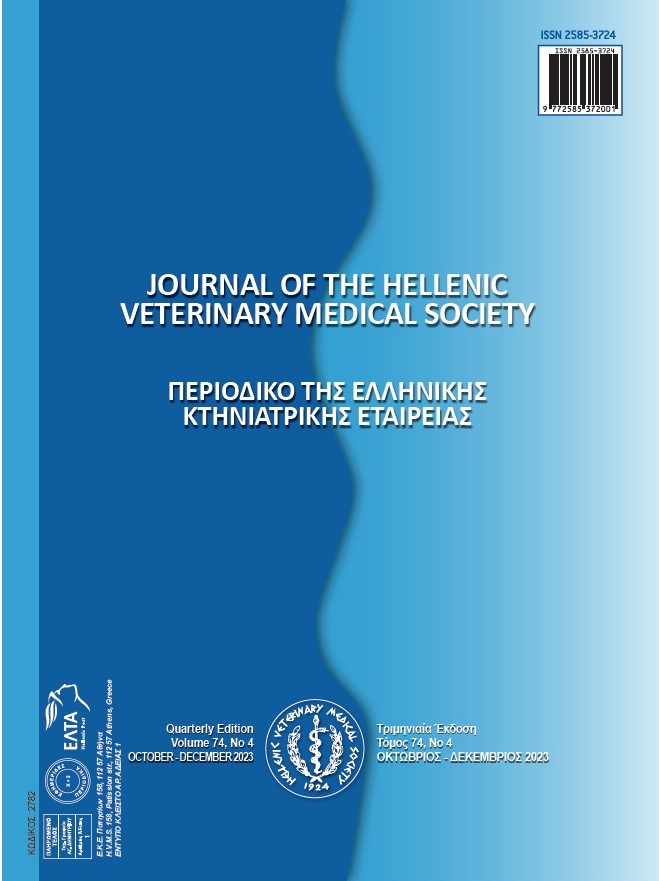Identification of genetic polymorphisms in MC4R and GPX5 genes in the autochthonous Greek black pig breed

Περίληψη
The importance of local breeds as genetic reservoirs of valuable genetic variation is well established and the evaluation of the genetic structure of autochthonous pig breeds is very important for conservation of local pig breeds and preservation of diversity. Although local farm animal breeds are important for the maintenance of genetic diversity, most of them are now in danger of extinction. The autochthonous Greek black pig breed, which was raised locally and is well known for the high quality of its meat, is the only traditional indigenous pig breed reared in Greece and is able to adapt to different and harsh environmental conditions. Recent studies have reported that gene polymorphisms in melanocortin 4 receptor (MC4R) and glutathione peroxidase 5 (GPX5) genes are associated with litter size in pig and can be used as genetic markers in gene assisted selection programs for the improvement of reproductive performance. The objective of this study was to investigate the existence of these polymorphisms in the autochthonous Greek black pig breed. One hundred sixty pigs raised in Greece were included in the study. DNA was extracted and genotyping was performed using RFLP - PCR. The molecular results revealed that for MC4R, genotype GG had a frequency of 0.37, GA 0.44 and AA 0.19, while the frequency of allele G was 0.56 and of A 0.44. For GPX5, genotype AA had a frequency of 0.19, AB 0.41 and BB 0.40, with frequencies of alleles A and B being 0.43 and 0.57, respectively. These data revealed that all genotypes of the two genes were present in the investigated population, indicating that these genes could be used for Marker-assisted selection programmes for the genetic improvement of reproductive characteristics of this breed.
Λεπτομέρειες άρθρου
- Πώς να δημιουργήσετε Αναφορές
-
Karatosidi, D., Avgeris, E., & Michailidis, G. (2024). Identification of genetic polymorphisms in MC4R and GPX5 genes in the autochthonous Greek black pig breed. Περιοδικό της Ελληνικής Κτηνιατρικής Εταιρείας, 75(1), 7045–7050. https://doi.org/10.12681/jhvms.34029 (Original work published 20 Απρίλιος 2024)
- Τεύχος
- Τόμ. 75 Αρ. 1 (2024)
- Ενότητα
- Research Articles

Αυτή η εργασία είναι αδειοδοτημένη υπό το CC Αναφορά Δημιουργού – Μη Εμπορική Χρήση 4.0.
Οι συγγραφείς των άρθρων που δημοσιεύονται στο περιοδικό διατηρούν τα δικαιώματα πνευματικής ιδιοκτησίας επί των άρθρων τους, δίνοντας στο περιοδικό το δικαίωμα της πρώτης δημοσίευσης.
Άρθρα που δημοσιεύονται στο περιοδικό διατίθενται με άδεια Creative Commons 4.0 Non Commercial και σύμφωνα με την άδεια μπορούν να χρησιμοποιούνται ελεύθερα, με αναφορά στο/στη συγγραφέα και στην πρώτη δημοσίευση για μη κερδοσκοπικούς σκοπούς.
Οι συγγραφείς μπορούν να καταθέσουν το άρθρο σε ιδρυματικό ή άλλο αποθετήριο ή/και να το δημοσιεύσουν σε άλλη έκδοση, με υποχρεωτική την αναφορά πρώτης δημοσίευσης στο J Hellenic Vet Med Soc
Οι συγγραφείς ενθαρρύνονται να καταθέσουν σε αποθετήριο ή να δημοσιεύσουν την εργασία τους στο διαδίκτυο πριν ή κατά τη διαδικασία υποβολής και αξιολόγησής της.



